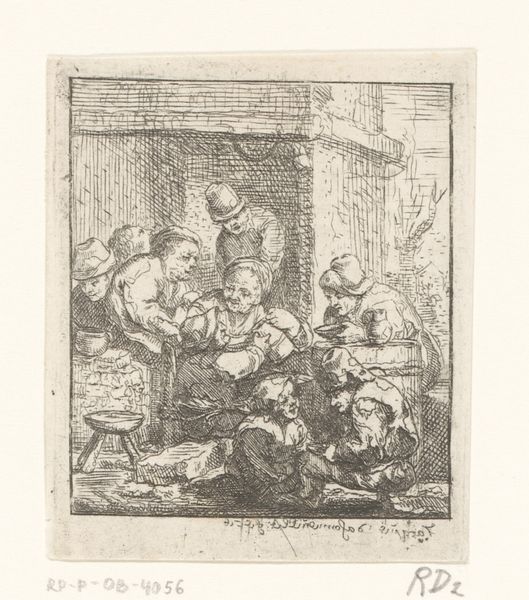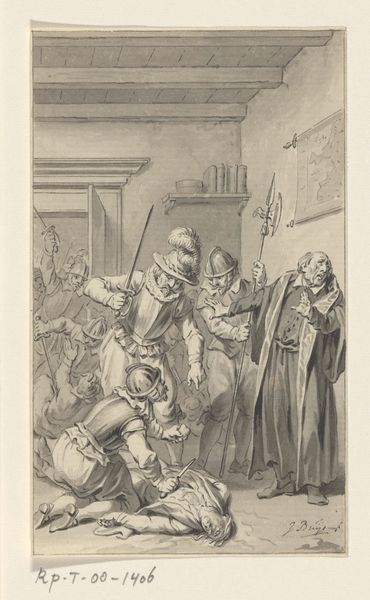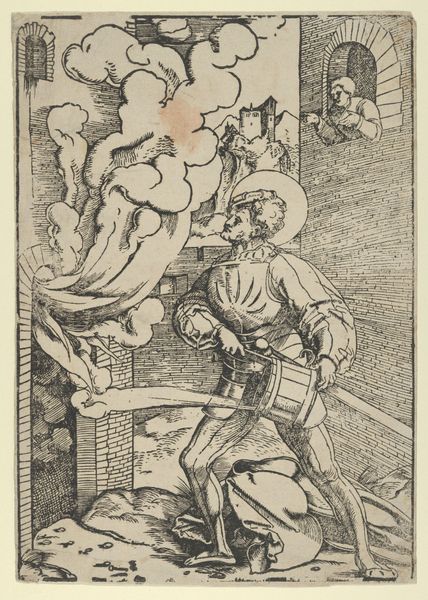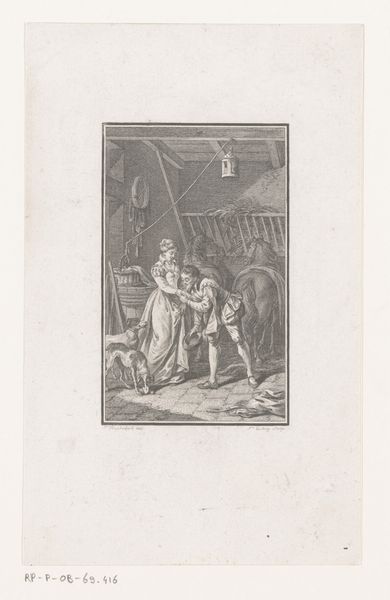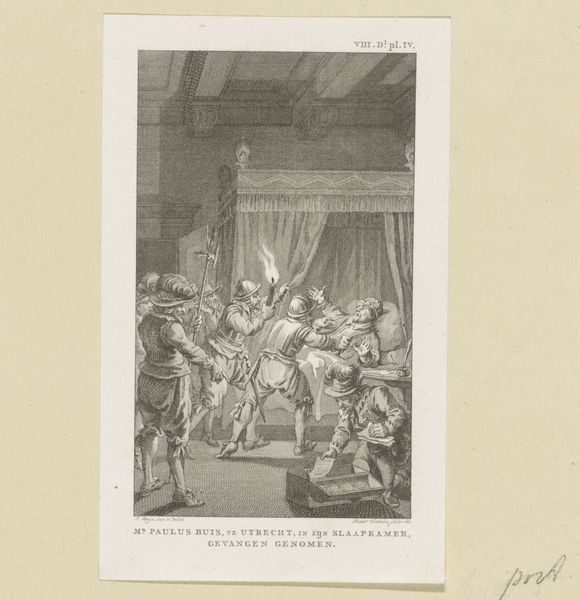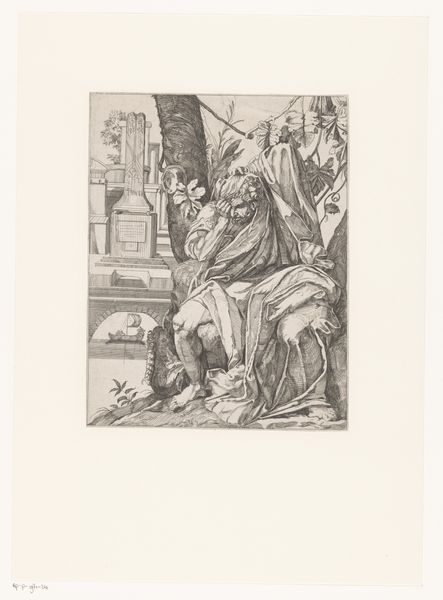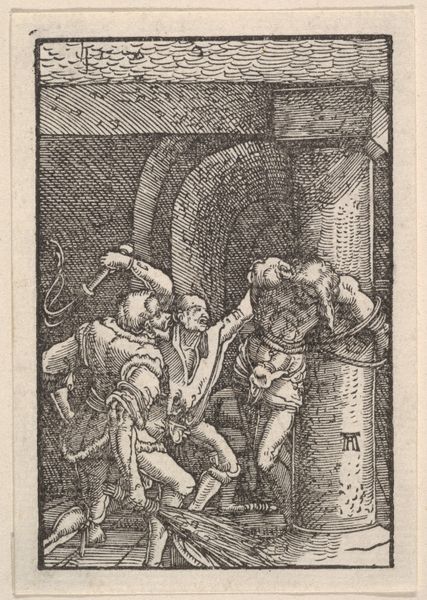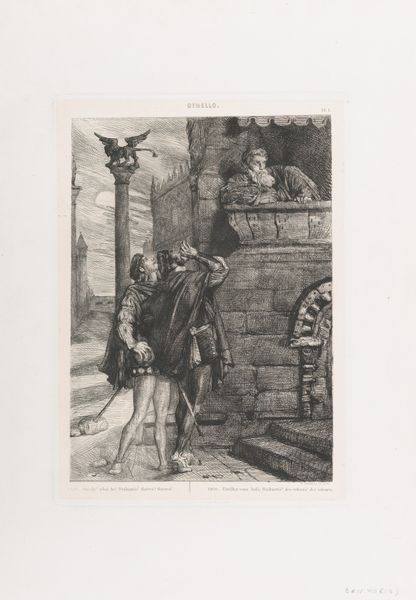
Dimensions: height 123 mm, width 92 mm
Copyright: Rijks Museum: Open Domain
Curator: Looking at this artwork, titled "Vioolspelende man en blokfuitspelende jongen" by Carl Friedrich Holtzmann, made sometime between 1750 and 1811 using engraving and etching techniques, I immediately notice the detailed linework. What's your first impression? Editor: A bit chaotic, to be honest! It feels almost theatrical. The way the figures are arranged, slightly cramped within the space, and their expressions… there's a performative quality to it that hints at a constructed reality. Curator: Precisely. Consider the presence of musical instruments and the postures of those depicted. Music as a symbol, transcends its immediate auditory role. It's the embodiment of cultural tradition and narrative. In this case, perhaps something folk-inspired given the instruments and clothing of the primary musician. Editor: I wonder though, about the relationship between the musicians and the other figures. Are they performing for them, or is their performance more of an intrusion, a form of busking? The onlookers almost seem like they are surveilling rather than enjoying the concert, peering out from what looks like a half door into a barrel and what’s possibly the town square. It brings up interesting questions about who has access to public space, especially during that era, and who profits. Curator: That interpretation sheds a very interesting light on the social dynamics implied in Holtzmann’s work. Think of how the lute has been portrayed throughout Western Art. It often implies privilege, class, or an educated artistic background, where only certain figures participate. Are there historical antecedents that predate this image? Is this merely a modern manifestation or has the meaning changed over time? Editor: And look at that young child sitting in what appears to be a tub. There are some economic factors that speak to that part of the scene and who is privy to a particular level of healthcare at a given point in time. To connect it with a modern equivalent, the composition might subtly underscore themes of class difference within a capitalist structure. Curator: Thank you. It’s important to emphasize how interpretations will change as culture evolves and different experiences allow us to see varying, interconnected narratives throughout all visual culture. Editor: It highlights, in fact, the evolving meaning within artistic mediums. Hopefully, people will discover it for themselves through exploration, whether or not they find it easy to love this Baroque-era narrative at first sight.
Comments
No comments
Be the first to comment and join the conversation on the ultimate creative platform.

